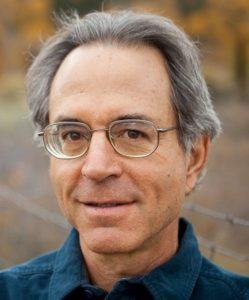Dr. Rick Strassman is a pioneering DMT researcher, psychiatrist, professor, and author.
Education and Work History
According to his website, Dr. Strassman received his BS with honors in Biological Sciences from Stanford University in 1973 after transferring from Pomona College, where he studied zoology for two years. He earned his MD from the Albert Einstein College of Medicine at Yeshiva University in 1977, graduating as a member of the Alpha Omega Alpha Honor Medical Society. He then completed his internship and residency in psychiatry at UC Davis.
Within the following decade, Dr. Strassman brought his clinical expertise to private practice, community health clinics, universities, hospitals, medical consultation roles, and a pharmacology fellowship at UC San Diego. He has also held several teaching, training, and leadership roles at the University of New Mexico (UNM), where he became a tenured Associate Professor of psychiatry in 1991. UNM honored Dr. Stassman with the Clinical Scientist Award in 1993 and 1994 and the Research Scientist Award in 1995. Aside from a stint as Clinical Associate Professor at the University of British Columbia from 1996 to 1999, he has taught there ever since.
Additionally, Dr. Strassman currently serves as a Stroke Consultant for Algernon Pharmaceuticals, a company that is exploring the non-hallucinogenic healing potential of DMT with stroke victims. In an interview with IFLScience, he explained “with respect to stroke, [sub-psychedelic DMT treatment] makes perfect sense, because you’d be giving DMT in conditions where you need neuroplasticity, neurogenesis, and protection from hypoxia.”
He also explained to Ruairi Mackenzie in a Technology Networks interview, “To the extent that DMT, a classical tryptamine psychedelic, exerts similar psychological and neurotrophic effects as other classical psychedelics – such as psilocybin and LSD – one would expect it to have the same range of therapeutic benefits. These could occur either psychologically at psychedelic doses, or via neurotrophic effects, which may occur at sub-psychedelic doses.”
Research
An early curiosity about altered states and their spiritual aspects led Dr. Strassman to investigate melatonin, a hormone produced in the human pineal gland. It was his work that identified melatonin’s sedative function in humans. Having confirmed the hormone’s effects were not psychedelic — and after his first DMT trip in 1986 with Terence McKenna (described in an interview on The Naked Guru Experience podcast) — Dr. Strassman pivoted his research focus to DMT.
His clinical studies with DMT were the first government-approved studies with hallucinogenic drugs in more than two decades, marking the dawn of the latest wave in psychedelic research. According to his website biography, Dr. Strassman administered several hundred DMT doses to about 60 healthy volunteer participants between 1990 and 1995. Since then, a significant portion of his research has remained focused on the human psychopharmacology and neuroendocrinology of DMT and other tryptamine-based hallucinogens.1-4
Based on his early clinical studies, Dr. Strassman published his first book, DMT: The Spirit Molecule in 2001. He co-produced a documentary film by the same title in 2011 which features several other famed psychedelic researchers and figures including Charles Grob, Dennis McKenna, Roland Griffiths, David Nichols, and Joe Rogan. The book and film describe the known mechanisms of DMT in the brain and the mystical aspects of its profound hallucinogenic effects. Occurring naturally in a wide variety of flora and fauna, DMT’s source and purpose have long been shrouded in mystery; DMT: The Spirit Molecule posits Dr. Strassman’s theory that the compound is secreted by the pineal gland during stressful life events such as birth, death, and during near-death experiences.
Critics of this theory assert that the pineal gland cannot physically produce the amount of DMT necessary to incite a hallucinogenic experience. A Psychedelic Science Review article addresses this so-called biosynthesis controversy, describing a 2019 study that found evidence that DMT is endogenously synthesized in mammalian brains but that such biosynthesis does not rely on the pineal gland.5 Dr. Strassman was quoted in a February 2021 Reality Sandwich article, saying,
I think the presence of DMT in the brain is way more interesting than DMT in the pineal. The concentrations of DMT in the brain are comparable to serotonin and dopamine, which points to the possibility of a DMT neurotransmitter system. That would be completely mind-blowing, to start to speculate about what the role would be of a DMT neurotransmitter system in the mammalian brain.
Several other of Dr. Strassman’s research initiatives were funded by major government grants, including a study in the mid-1980s that provided tetrahydrocannabinol (THC) to cancer patients undergoing chemotherapy. He has also contributed to research exploring psychedelics as addiction treatment.6,7 His work on Bogenschutz et al’s 2015 study on psilocybin-assisted treatment for alcohol dependence was ranked among Psychedelic Science Review’s top 10 psilocybin research papers of the last 20 years.
Publications
In addition to publishing more than 40 scientific papers, Dr. Strassman has authored several books on psychedelics. DMT: The Spirit Molecule has been translated into 12 languages. It was followed by Inner Paths to Outer Space, DMT and the Soul of Prophecy, and his first psychedelic fiction title, Joseph Levy Escapes Death.
Raised in a Conservative Jewish home and a practitioner of Zen Buddhism for 20 years, Dr. Strassman has explored the relationship between psychedelic experiences and spirituality in his writings. He serves on the Editorial Boards for the Journal of Mindbody States and the Journal of Psychedelic Studies as well as the Advisory Panel for the Journal of Drug Education and Awareness. He is also active in peer review for numerous journals in psychopharmacology, addiction, neurology, psychiatry, and related fields.
More information about Dr. Rick Strassman’s research can be found on his ResearchGate profile.
